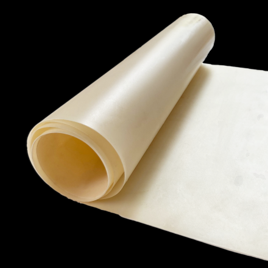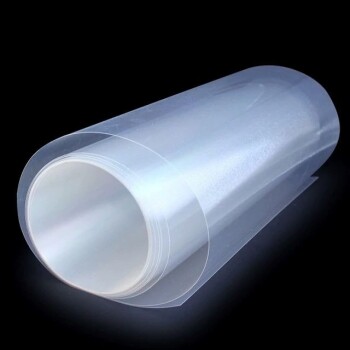
battery material
Anion Exchange Membrane for Laboratory Use
Item Number : BC-21
Price varies based on specs and customizations
Shipping:
Contact us to get shipping details Enjoy On-time Dispatch Guarantee.
Why Choose Us
Reliable PartnerEasy ordering process, quality products, and dedicated support for your business success.
Application
Anion exchange membranes (AEMs) are semipermeable membranes, usually made of ionomers, designed to conduct anions but reject gases such as oxygen or hydrogen. Anion exchange membranes are used in electrolysis cells and fuel cells to separate the reactants present around the two electrodes while transporting the anions required for the cell to operate. An important example is the hydroxide anion exchange membrane used to separate the electrodes of direct methanol fuel cells (DMFC) or direct ethanol fuel cells (DEFC).
- In the fields of chlor-alkali industry, water treatment industry, heavy metal recovery, hydrometallurgy and electrochemical industry; it is an important part of separation devices, purification devices and electrochemical components.
- In new electric energy conversion devices; as a battery diaphragm in liquid flow energy storage batteries, alkaline anion exchange membrane fuel cells, new supercapacitors, etc.; the anion exchange membrane used not only plays the role of isolating oxidants and reducing agents, but also It also has ion conduction.
Detail & Parts




Technical specifications
| Product number | Thickness | Available Size |
| A15-HCO3 | 15 microns | 5*5cm; 5*10cm; 10*10cm; 20*10cm; 20*20cm; 30*10cm; 30*15cm |
| A20-HCO3 | 32 microns | |
| A32-HCO3 | 40 microns | |
| A40-HCO3 | 60 microns | |
| A80-H29316 | 80 microns | |
| A15R-HCO3 | 15 microns | 5*7cm; 10*7cm; 14*10cm; 28.5*10cm; |
| PiperlON A5 ionomer solid | PiperlON-A5-HCO3 0.8g | 1 bottle/half bottle |
| Thickness and Basis Weight | Typical Thickness (um) | Basis Weight (g/m²) |
| A20-HCO3 | 20 | 22.6 |
| A40-HCO3 | 40 | 45.2 |
| A80-HCO3 | 80 | 90.4 |
| Physical Properties | Typical Vaiue | |
| Tensile Strength(MPa) | ||
| A20-HCO3 | >30 | |
| A40-HCO3 | >50 | |
| A80-HCO3 | >50 | |
| Young's Modulus | ||
| A20-HCO3 | >30 | |
| A40-HCO3 | >50 | |
| A80-HCO3 | >50 | |
| Elongation at Break (%) | ||
| A20-HCO3 | >20 | |
| A40-HCO3 | >60 | |
| A80-HC03 | >100 | |
| Specific Gravity | 1.13 | |
| Other Properties | ||
| IEC(meq/g) | 2.35 | |
| Conductivity(mS·cmOH80℃) | 150 | |
| Hydrolytic Properties | Typical Value |
| Swelling Ratio(%80°C 1M KOH) | 8 |
| Water Uptake(%80℃1MKOH) | 50 |
Anionic membrane dispersion (also known as ionic membrane solution, ionomer solution, ion conductive agent lonomer, etc.) is a material required for making ion exchange membranes, membrane electrodes and other materials. We can provide 5wt% membrane solution. The solvent is Ethanol, the specification is 20mL.
Advantages
- High ion selective permeability
- low resistance
- High mechanical strength
- Excellent chemical resistance
- Excellent dimensional stability
- The diffusion coefficient of solute and solvent is small
- Separation of monovalent and polyvalent ionsIntroduce
FAQ
General Steps Of The Treatment Method For Anion Exchange Membranes.
4.8
out of
5
KINTEK SOLUTION's Anion Exchange Membrane is an amazing product for lab use. It's very durable and has great chemical resistance.
4.7
out of
5
I'm very impressed with the quality of this Anion Exchange Membrane. It's well-made and has exceeded my expectations.
4.9
out of
5
The Anion Exchange Membrane from KINTEK SOLUTION is a great value for the price. It's very affordable and does a great job.
4.6
out of
5
I'm very happy with my purchase of the Anion Exchange Membrane. It arrived quickly and was packaged very well.
4.8
out of
5
The Anion Exchange Membrane is a great product. It's very easy to use and has made my lab work much easier.
4.9
out of
5
I highly recommend the Anion Exchange Membrane from KINTEK SOLUTION. It's a high-quality product that has met all of my needs.
4.7
out of
5
I'm very impressed with the performance of the Anion Exchange Membrane. It's very efficient and has helped me to get accurate results.
4.8
out of
5
The Anion Exchange Membrane is a great product for research purposes. It's very reliable and has helped me to get consistent results.
4.6
out of
5
I'm very happy with the Anion Exchange Membrane. It's very user-friendly and has made my lab work much more efficient.
4.7
out of
5
The Anion Exchange Membrane is a great investment. It's very durable and has saved me a lot of money in the long run.
4.9
out of
5
I highly recommend the Anion Exchange Membrane from KINTEK SOLUTION. It's a top-of-the-line product that has exceeded my expectations.
4.8
out of
5
The Anion Exchange Membrane is a must-have for any lab. It's very versatile and can be used for a variety of applications.
REQUEST A QUOTE
Our professional team will reply to you within one business day. Please feel free to contact us!
Related Products

Proton Exchange Membrane for Batteries Lab Applications
Thin proton exchange membrane with low resistivity; high proton conductivity; low hydrogen permeation current density; long life; suitable for electrolyte separators in hydrogen fuel cells and electrochemical sensors.

1700℃ Controlled Atmosphere Furnace Nitrogen Inert Atmosphere Furnace
KT-17A Controlled atmosphere furnace: 1700℃ heating, vacuum sealing technology, PID temperature control, and versatile TFT smart touch screen controller for laboratory and industrial use.

Custom PTFE Teflon Parts Manufacturer for Culture Dish and Evaporation Dish
The PTFE culture dish evaporating dish is a versatile laboratory tool known for its chemical resistance and high-temperature stability. PTFE, a fluoropolymer, offers exceptional non-stick properties and durability, making it ideal for various applications in research and industry, including filtration, pyrolysis, and membrane technology.
Related Articles

Applications of H-Type Electrolytic Cell in Metal Extraction
H-type electrolytic cells uses an electrolyte solution to dissolve the metal ions and an electric current to separate the metal ions from the solution.

Comprehensive Guide to Rotating Disk Electrode (RDE) in Electrochemical Studies
Explore the detailed workings, applications, and significance of Rotating Disk Electrodes (RDE) in electrochemical research. Discover how RDEs are used in fuel cells, catalyst development, and more.

The Importance of Activated Carbon Regeneration in Water Treatment
In water treatment, activated carbon is often used as a means of removing unwanted contaminants, such as chlorine, chloramines, and organic matter, from drinking water and wastewater.

All About ACTIVATED CARBON THERMAL REGENERATION
Introduction, method and selection of activated carbon regeneration

The Future of Electrochemical Electrodes
The latest trends and developments in electrode materials and their implications for the future of electrochemistry.

Innovations in Electrochemical Electrodes Technology
Recent advancements in nanotechnology and materials science have led to significant improvements in electrochemical devices, making them more efficient, durable, and cost-effective.

Understanding Electrolytic Cells: Conversion of Energy and Applications
Electrochemical cell An electrochemical cell is a device capable of either generating electrical energy from chemical reactions or facilitating chemical reactions through the introduction of electrical energy.

Applications of Electrolytic Cells in Purification and Electroplating
Electrolytic cells are chemical cells that use electricity to generate a non-spontaneous redox reaction. These cells are used in various electrochemical processes such as electrolysis and electroplating.

Exploring the Multifunctional Electrolytic Cell Water Bath: Applications and Benefits
Discover the versatile applications of multifunctional electrolytic cell water baths in various industries. Learn about their benefits, components, and how they facilitate chemical reactions and temperature control.

Advantages of the Rotating Electrode Method
Rotating electrode method involves rotating a small working electrode to increase the mass transport of reactants and products, allowing for more precise measurements and better control of reaction conditions.

What is Isostatic Pressing Machine
Isostatic molding is a molding method that uses the incompressibility of a liquid medium and the uniform transfer of pressure. It is suitable for powder dense parts with equal pressure in all directions. The principle is to fill the mold with a liquid medium, such as water, and then subject the mold to uniform pressure. The pressure is applied by a piston or a flexible membrane.

The Geometry of Cleanliness: Why Surface Integrity Defines Electrochemical Success
Master the art of electrolytic cell maintenance. Discover how a tiered cleaning protocol prevents contamination and ensures experimental reproducibility.